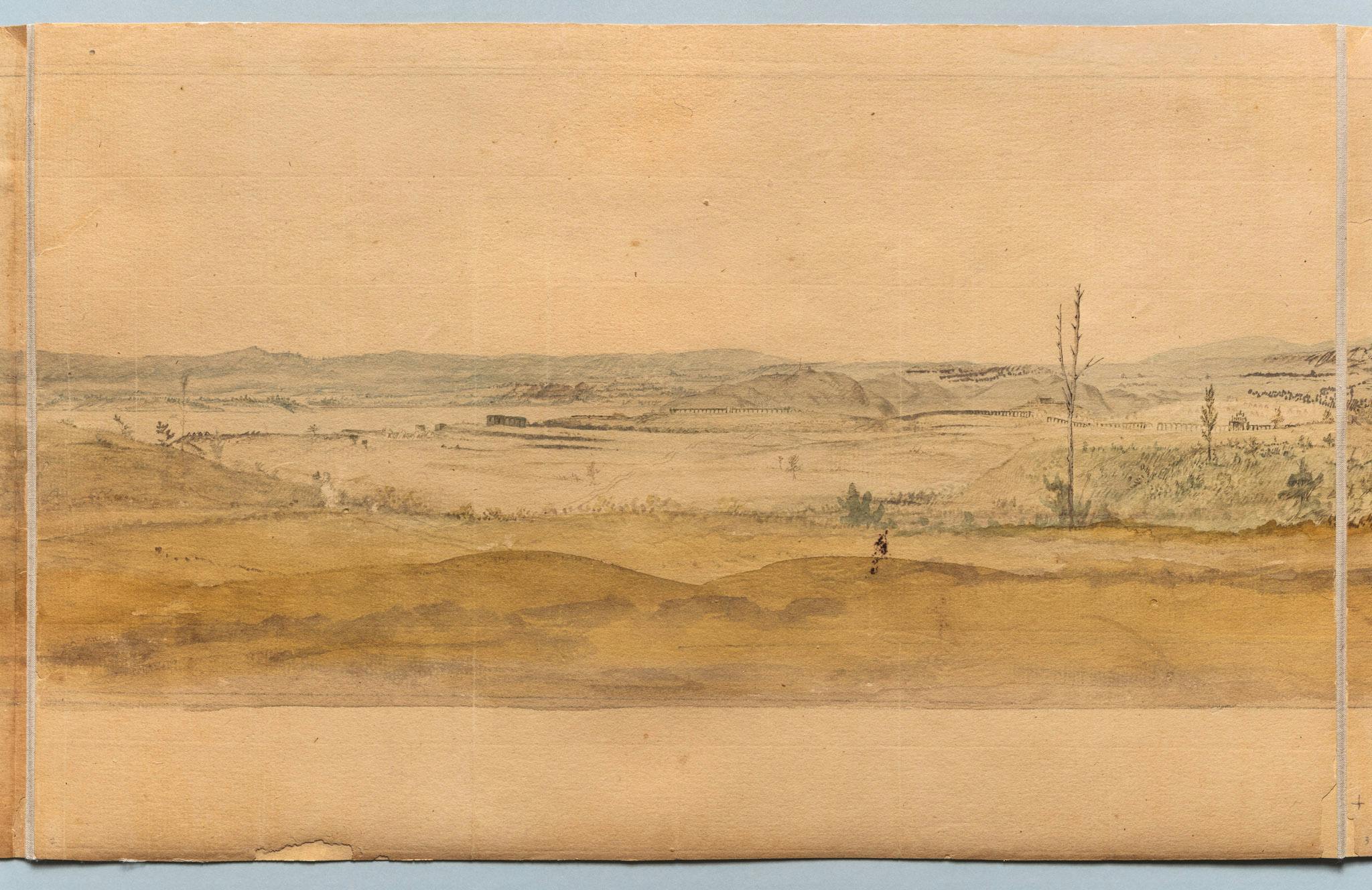Verplanck’s Point
Parade Ground
Take a closer look at the area where the Continental Army showed its professionalism to the French. The tents of the New York and New Jersey troops are visible here, as well as Stony Point across the Hudson River.
Image: Museum of the American Revolution, Gift of the Landenberger Family Foundation

